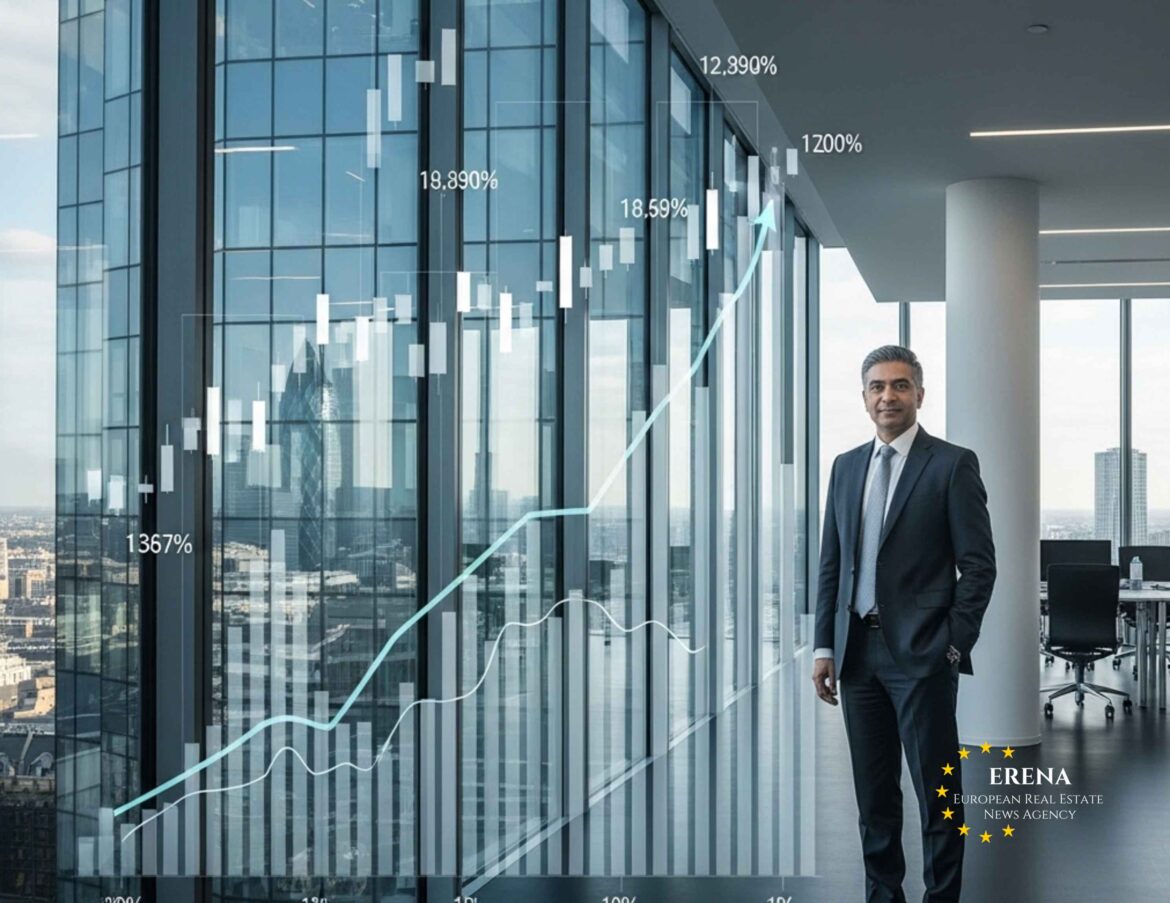British investment company Helical, specializing in commercial real estate, has published its results for the fiscal year ending in March 2025. Despite a challenging macroeconomic environment and shifting demand in the office sector, the company achieved strong profitability while maintaining a disciplined investment strategy.
The total value of asset sales reached €670 million, with pre-tax profit amounting to approximately €58 million. The company maintained a low loan-to-value ratio of less than 25%, and return on equity (ROE) reached 11.2%. Helical also recorded a low vacancy rate of 3.8%, reflecting the quality of its assets and sustained tenant demand.
Key Asset Disposals
Helical successfully sold three major assets, generating significant liquidity for reinvestment:
- The Bower, Old Street — a multi-use office complex sold for €284 million, generating a profit of over €40 million;
- Kaleidoscope, Farringdon — sold to a tech-focused investor for €190 million;
- The Loom, Whitechapel — sold to a private investment fund for €73 million.
These transactions enabled the company to reallocate capital to higher-yielding opportunities without increasing leverage.
Focus on Central London
Helical continues to concentrate on high-quality office developments in Central London, specifically the City, Shoreditch, and Farringdon districts. These are among the most in-demand locations in the UK, particularly for tech firms, finance companies, and creative agencies.
As of March 2025, Helical’s investment portfolio was valued at €1.12 billion, with approximately 80% of assets located within a few kilometers of the City.
ESG and Sustainable Development
Helical places strong emphasis on sustainability: over 80% of its assets are certified to BREEAM Excellent and WELL standards. This enhances the market value of its properties and ensures continued interest from tenants prioritizing environmental and social responsibility.
One notable project is 22 Garrett Street, launched in 2024, which incorporates rooftop solar panels, rainwater harvesting systems, automated climate control, and green roofs. The project is expected to complete in 2026, with a total investment of approximately €66 million.
Rental Income and Lease Structure
Amid stabilizing office demand, Helical reported a 4.6% increase in average rental rates, reaching €850 per square meter per year. Over 70% of the company’s tenants are on long-term leases, with an average lease duration of 6.3 years.
Tenants continue to seek flexible, tech-enabled, and certified buildings. This aligns with the post-pandemic hybrid work trend, where companies focus on quality over quantity in their office footprint.
Conservative Financing and Risk Management
Helical maintains a prudent financial model. As of March 2025, total debt stood at €280 million, with a weighted average interest rate of 3.1%. This gives the company ample liquidity and stability amid rising interest rates across Europe.
The low leverage strategy also allows Helical to seize investment opportunities without overburdening its portfolio or increasing exposure to credit risk.
Future Investments and Growth Strategy
In 2025–2026, Helical plans to invest at least €120 million in active developments and new acquisitions. The focus will remain on premium office properties in high-demand submarkets, with strict adherence to ESG standards and long-term profitability goals.
Selective acquisitions are under consideration, particularly in areas showing strong fundamentals and value-add potential. However, the company remains cautious, prioritizing quality over volume.
Market Outlook and Analyst Views
According to analysts from CBRE and JLL, Helical’s operating model remains resilient. In an environment characterized by higher borrowing costs, inflationary pressure, and changing tenant preferences, the company has managed to maintain profitability and strategic agility.
Experts highlight Helical’s approach to redevelopment, energy efficiency, and tenant-focused design as key differentiators. In contrast to some peers experiencing devalued portfolios or rising vacancies, Helical’s assets continue to attract stable income streams.
London’s office market remains one of the most active in Europe. Demand for certified and energy-efficient office space is expected to persist, with limited new supply in central areas reinforcing pricing power for landlords.
Moreover, high-quality buildings in prime locations are retaining their value despite external volatility. This makes Helical’s strategy not only profitable but also robust in the face of economic uncertainty.
Conclusion
Helical ended its financial year on a strong note, completing €670 million in asset sales while maintaining low leverage and delivering robust returns. With a solid financial foundation, sustainable development strategy, and premium office portfolio, the company is well-positioned for continued success.
As demand for ESG-compliant offices grows and London remains a magnet for global businesses, Helical is poised to capitalize on long-term market trends throughout 2025 and beyond—confirming its status as one of the UK’s most reliable and adaptable commercial property players.

